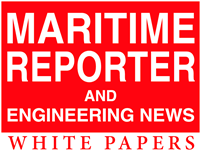
Understanding the many details of a satellite communications solution – and how a comprehensive approach is the fastest path to digitalization
As the maritime industry begins to embrace digitalization, seeing the promise of benefits such as improved operational efficiency and cost savings, the focus is on connectivity. Fast, reliable, affordable connectivity is the catalyst for digitalization. Indeed, for seagoing vessels today, satellite broadband services are as essential as the sextant was to prior generations of mariners. Satellite communications can provide captains with the navigation, fleet operations, and weather information they need to travel safely and efficiently. They also are capable of providing crews with access to digital entertainment and a vital link to families and friends ashore — crucial morale boosters for long, lonely voyages.
Indeed, it’s hard to imagine how one could run a modern fleet without maritime satellite services.
But there’s a price to pay for global connectivity at sea. Consider that on shore, mobile device data plans typically charge $0.01 to $0.02 per megabyte for service. Receiving or transmitting that same megabyte of data at sea via satellite will be one to three orders of magnitude more expensive — costing from $0.10 to more than $20.00, depending on the monthly contract and choice of satellite service. The higher cost must be weighed against the efficiencies enabled by satellite broadband connectivity, especially when it comes to non-critical data, such as entertainment.
To help gain control over costs, many fleet operators have been drawn to an a la carte approach to satellite communications services in which they pick a seemingly low-cost “unlimited” plan from one provider and other services from another. But what are you really paying for...and what are you really receiving? To find out, consider asking the satellite communications providers you are considering these six important questions:
No. It’s important to realize that satellite bandwidth has a limited capacity to carry bits of data to and from the vessel. Capacity is not speed; capacity is bandwidth used over time. The service provider is simply basing pricing on a one-size-fits-all “standard use” scenario. If you
start to bump up against prescribed usage limits — often contained in fine print in the service provider’s “fair use” or “fair access” policies — automatic usage constraints, including speed throttling or website blocking, may be used to manage your data use. This sometimes happens — particularly if there are no tools for allocating data and monitoring data usage onboard — when an individual user inadvertently runs through the vessel’s entire monthly data allocation and triggers the throttling. So the answer is the data may be unlimited but likely not at the fast speeds you think you’ll be getting based on your contract.
Think of service speeds in terms of the total bandwidth delivered to the vessel — and that must be divided among the number of users trying to access the network. When you are purchasing service based on data speeds, the more users at one time results in slower the access for all. When the data plan’s speeds are too low to begin with, this can be a frustrating experience for crewmembers trying to access their email, download photos, or stream a video clip. But in the event of an emergency, slow access or the inability to videoconference at a critical moment could prevent the captain from dealing effectively with a serious illness, injury, or mechanical failure — an unacceptable risk.
Alternatively, purchasing service based on the amount of data you expect to use rather than one speed with an expectation of “unlimited” data removes the service speed limits and throttling from the equation. The service provider can instead deliver your data at the fastest rates available.
How does the service provider manage network performance?
A provider who is responsible only for the satellite network, and no other part of the solution, has an easy “out” when your network performance becomes slower or less reliable than you expected. Providers assembling a rack of off-the- shelf components that are beyond their control may also face challenges in fully managing network performance.
Providers who are in control of the end-to-end solution — the network, the airtime, the integrated hardware, the below-decks hardware and user interface, etc. — are both able to manage the network to optimize the entire experience as well as provide a detailed level of performance, support, and proactive monitoring that will deliver a far more positive user experience.
Research has shown that making Internet services faster actually encourages users to increase their rate of consumption, causing congestion that could wipe out enhanced performance. Despite this knowledge, many service providers do not make network management and
user allocation tools available to maritime enterprises. However, a truly customer-centric SATCOM solution should provide complete transparency into the antenna and network performance, data usage, and costs with additional features like user-managed crew data allocation, secure vessel tracking, etc.
In today’s challenging economy, fleets need to be agile, whether they are selling or acquiring vessels or simply looking for the best value when upgrading a fleet. Connectivity as a Service (CaaS) is the type of no-commitment, subscription-based approach that provides total flexibility. For example, a CaaS plan can provide hardware, airtime, and maintenance all in one subscription-based monthly package. The CaaS approach eliminates the need for a big capital expenditure up front and instead becomes a benefit for the fleet — and the operating budget — from day one. Many providers, however, are unable to offer this type of plan because the various elements of the solution — hardware, airtime, content, etc. — are sourced from other companies so they don’t have control over the costs and integration. Instead, they often try to point to CaaS as an approach that is too good to be true, which is usually an indication that they simply aren’t in a position to make a similar offer.
Fleets today need to provide world-class crew welfare content in order to attract and maintain the best seafarers, who expect not only Internet access, but also news, movies, TV, and sports content. Operations can be improved as well if a satellite communications provider can quickly and affordably deliver such content as ECDIS-compliant chart updates and high-resolution, global-scale weather updates. In addition, by providing top-quality training programs, the fleet can boost a crew’s productivity and reduce risk, particularly if the training is accompanied by a management platform.
However, many satellite providers do not have the resources or technology to offer a content delivery solution that addresses crew welfare, operations, and training either because they don’t have access to such content or, if they do, they need to charge by the megabyte. Other approaches, like multicasting, allow this type of content to be broadcast in the background on a subscription plan that does not affect onboard data speed or the monthly data budget.
Don’t like the answers you receive to these questions? You’re not alone. The lack of clarity and transparency that characterizes most maritime satellite services is a major reason for the “buyer beware” attitude of many satellite communications customers.
But there is an alternative — an approach to maritime satellite pricing, delivery, and management that avoids the pitfalls common to traditional SATCOM services and gets you well on the way to digitalization, the most important trend in the maritime industry today. Insist on a VSAT maritime satellite service that provides the following:
• Flexible airtime plans offering affordable, usage-based pricing with the fastest speeds on the network at every price point, and total transparency. This transparency should include full details of package prices, the quantity of data included, fair use policies, and the implications of exceeding the monthly allotted capacity all clearly explained.
• Fast, reliable service with global coverage where the speed of the connectivity is independent of the size or price of the monthly airtime contract.
• Onboard equipment preconfigured and optimized for use with the service provider’s satellite network and your onboard data requirements, with built-in network management and diagnostic capabilities.
• Remote management capabilities that enable fleet operators to monitor and control satellite network usage.
• Flexible allocation of bandwidth to user classes (e.g., crew, officers, captain) or even individual users, to effectively manage available bandwidth and ensure priority access for operational and emergency traffic.
• Efficient delivery of bandwidth-intensive content, outside of your data plan usage allowances — including operational content and crew entertainment content. This requires advanced multicasting and background streaming technologies that make it possible to deliver large files once to a vessel for a flat subscription price. Content can then be accessed by multiple users across the ship’s network without consuming the vessel’s data plan or affecting onboard data speeds. This effectively “offloads” much of the data that consumes satellite bandwidth when individual users are accessing content separately.
• Commercially licensed content, including movies, TV shows, news, sporting events, and music. This allows fleet operators to cost-effectively provide seafarers with quality content — an important competitive advantage for attracting and retaining qualified crewmembers. It also helps avoid the possibility of legal action as crewmembers are no longer tempted to bring pirated content onboard vessels.
• Critical operations data and updates from application leaders, including onboard training courses, chart database updates, and detailed weather forecasts and updates.
• A no-commitment subscription-based plan, offering the simplicity of one monthly fee to cover hardware, airtime, content, and maintenance. Known as Connectivity as a Service (CaaS), this approach also provides peace of mind for the fleet manager who may need to respond quickly to changes in fleet size.
• Top-quality training content combined with a cloud-based training management platform, to take the guesswork out of knowing which training programs are needed for an individual seafarer or entire crew.
Trying to achieve all of the elements described above with point solutions would be a complex exercise in frustration. Realizing this vision requires an end-to-end approach that encompasses every step of the data flow — from teleport to satellite to ship.
By addressing the limitations of traditional maritime VSAT services — including both contractual and technical limitations — this new approach puts customers in control. That means control over how the bandwidth they purchase is used and how operational and entertainment content is delivered in order to free up satellite capacity for critical operational tasks and to keep costs down.
When shopping for a maritime satellite communications provider, asking these questions could lead to an uncomfortable conversation for many providers, but it will enable you to realize an efficient, affordable solution for your vessel(s). Partnering with a provider that has already realized this vision would seem to be a wiser course.
To achieve the goal of digitalization, fleets today more than ever need a maritime communications solution that is not only comprehensive, but also affordable, one that provides flexible options and innovative approaches to connectivity, content delivery, and training.

In the marine market, tight deadlines and budget constraints are common obstacles to overcome. Even finding a qualified welder for a marine application is a challenge, so being able to join pipe without flame can make all the difference in the marine world. Reducing time spent on repairs and labor expenses means you can focus on doing your job and keeping your crew safe. However, when dealing with a work environment that involves floating on a volatile sea, it can be difficult to ensure safety and precision while operating ocean-based support vessels, drill ships and oil platforms.

Any time heavy machinery is being moved from one place to another, it’s important to ensure that the equipment being used for the project is both properly maintained and inspected and also that the proper equipment is being used for the task at hand. At these moments, the decision of whether to use owned equipment or to rent a different piece of machinery to ensure that the project runs smoothly is of the utmost importance.

While there have been a few attempts over the years to design more efficient towboats, as a whole the inland industry has lagged behind the rest of the marine world in regards to the application of modern engineering methods to produce more efficient hull shapes. Conventional wisdom has always held that the shape of the towboat hull had very little impact on the overall efficiency of a line haul or unit tow when it comes to fuel efficiency or vessel speeds. However, TSGI has been applying state of the art Computational Fluid Dynamics (CFD) to analyze this very topic, with significant results to the contrary.